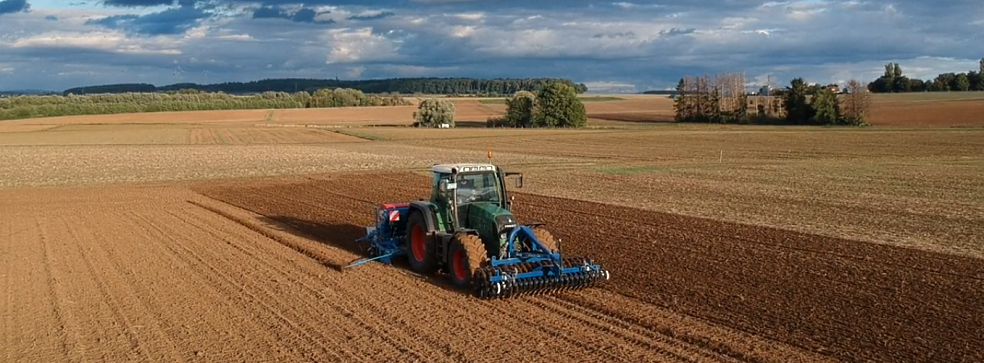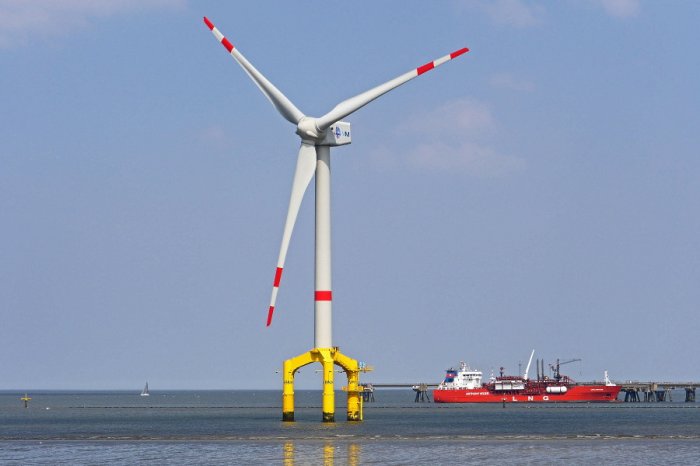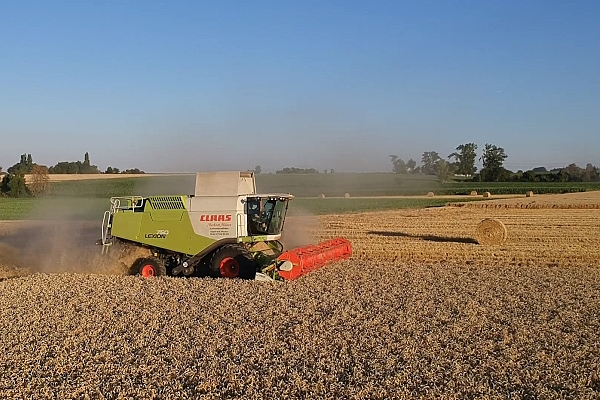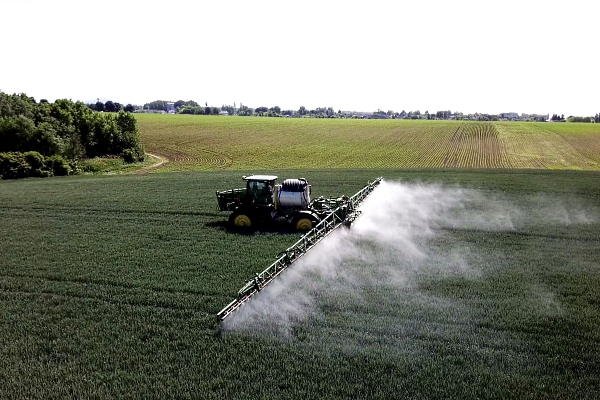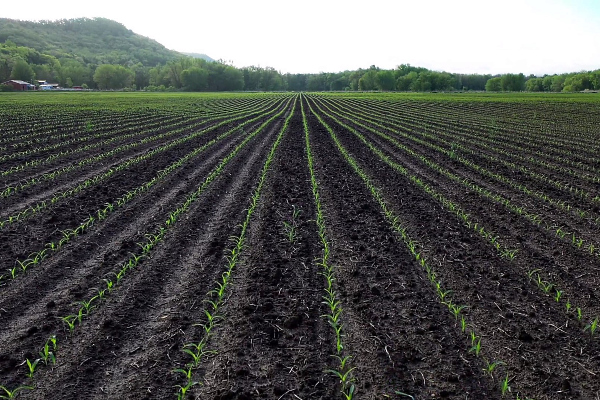After receiving the necessary documents (application form and project presentation), our team will try to review your request as soon as possible, and leading experts will offer the best options for project funding.
This approach to attracting long-term capital opens up great opportunities for financing agricultural projects that require significant resources at the early stages.
Unlike traditional corporate finance, PF models are based on cash flows generated by a specific investment project and are secured by the assets of this project. This creates certain opportunities and risks for the participants, which must be weighed in each specific case. Below we consider the advantages, disadvantages and main areas of application of project finance in agriculture.
ESFC Investment Group provides loans to large agricultural companies and promotes the attraction of long-term financial resources for the development of dairy farming, grain farming, mixed farming, processing of agricultural products, food industry facilities and other businesses.
Contact our consultants to learn about our financing options for your project.
Financing of agricultural projects abroad
One of the main tasks of managing an agricultural project against the background of globalization is the organization of its financing abroad, which includes providing the project with all types of investment resources, including long-term funds, fixed and circulating assets, know-how and other intangible assets, land use rights, etc.However, the biggest problem of large investment projects is the accumulation of significant financial resources, especially in the early stages.
Countries such as the USA, India, Brazil, France, Indonesia, Mexico, Turkey, Argentina, Germany, Poland, Australia and Canada offer favorable conditions for investing in agricultural projects of various types.
Each investment destination offers unique opportunities for the development of large-scale agricultural projects in the field of livestock, crop production, agricultural processing, biomass energy and others. Available sources of long-term capital, which today is a scarce resource at the national and international level, is a key factor in the success of such projects.
In order to present the main potential areas of investment in different niches of agriculture, below is a table containing the leading countries in the production of basic agricultural products.
Information based on Food and Agriculture Organization of the United Nations.
| Country | Plant products | Livestock products |
| The United States | Maize, sorghum, cotton, lettuce, lentils, onions, green peas, potatoes, broccoli, spinach, soybeans, carrots, tomatoes, sugar beets, pears, apples, oranges, grapes, strawberries, raspberries, blueberries, almond, pistachio, walnut, tobacco | Chicken, beef, pork, fish, cow's milk, cheese, eggs, honey |
| China | Buckwheat, maize, millet, rice, wheat, cotton, lettuce, beans, green peas, cabbage, broccoli, eggplant, spinach, potatoes, cucumbers, canola, sweet potatoes, pumpkins, sugarcane, tomatoes, carrots, pears, peaches, apples , bananas, grapes, pineapples, plums, lemons, strawberries, kiwi, quince, watermelons, tea, chestnuts, walnuts, peanuts, chili peppers, garlic, cinnamon, ginger | Chicken, beef, buffalo, horse, pork, lamb, rabbit, goat, goose, fish, cow's milk, buffalo's milk, sheep's milk, caviar, eggs, honey, silk, wool |
| India | Millet, rice, wheat, cotton, lettuce, lentils, beans, onions, cabbage, green peas, chickpeas, eggplant, potatoes, broccoli, ginger, soybeans, canola, sugar cane, tomatoes, mangoes, bananas, okra, sesame seeds, lemons, oranges, papayas, watermelons, tea, cashews, peanuts, black pepper, garlic, rubber, wood fuel, etc. | Goat, chicken, eggs, cow's milk, buffalo milk, goat's milk, silk |
| Brazil | Maize, beans, cassava, sugar cane, bananas, coconuts, oranges, papayas, pineapples, lemons, coffee, Brazil nuts, tobacco, black pepper, yerba mate, sisal, cotton, wood fuel, etc. | Chicken, beef, pork, turkey, cow's milk, fish |
As for the volumes of production and exports of agricultural products, these figures are distributed extremely unevenly.
For example, in 2020, the United States exported about a quarter of global corn, while more than 50% of global palm oil exports came from Indonesia, and a third of global rice supply came from Thailand. The undisputed leader in the export of agricultural products remains the United States, which over the past decade has shown an indicator of more than 100 billion dollars annually.
Meanwhile, the availability of funding and regulatory conditions for the development of agricultural projects remain most attractive in developed countries such as the US, Canada, Germany, the Netherlands, Poland or the UK.
These factors largely determine the interest of foreign companies in doing business in these countries. For example, Western financial institutions such as Barclays, Santander or Wells Fargo dominate among the leaders in the field of financing agricultural projects at the international level.
On the other hand, many developing countries that are interested in the development of agribusiness and food production are actively improving their policies and developing the market today, supporting international projects in this area. Public financial institutions play an important role in ensuring the survival and prosperity of the sector.
For example, the State Bank of India provides long-term loans for the development of thousands of local farms, offering affordable financial resources and taking all the risks.
The main factors of successful financing of agricultural projects abroad are listed below:
• The pace of attracting investment should correspond to the project development schedule in accordance with the timeline and financial constraints.
• Reduction of costs and risks of the project should be ensured by creating an appropriate structure and sources of long-term financing.
• Development of the project should receive the support of the host country, including tax benefits, subsidies and others.
The algorithm for financing such projects includes several typical steps.
First, the expert team should carry out a comprehensive study of the viability of a specific project and its investment alternatives, including determining the compliance of costs and planned profits with the expectations of the participants.
Secondly, a high-quality step-by-step project implementation plan should be developed, which includes a comprehensive assessment of risks and weaknesses, as well as a schedule for providing the project with the necessary resources at all stages, etc.
An important practical step is the organization of project finance schemes, including the assessment and selection of the most appropriate financial options, the selection of capital providers, as well as the development of a flexible financial model in accordance with specific business needs. The last stage is the actual implementation of the approved plan, the attraction of resources and the control of debt service. This is a general outline of the process.
Financing agricultural projects as an investment activity is always risky, especially given the geopolitical tensions, changing investment climate and imperfect legal framework in some developing countries.
This is an extremely difficult task for young companies, because the development of complex investment projects in a foreign country requires broad competences, rich practical experience and significant free resources.

Agriculture is a relatively low-margin industry, so it can be difficult for companies to service large loans without the support of governments and other stakeholders. All of the above creates the prerequisites for finding new financial mechanisms to develop agricultural projects quickly and efficiently. One such tool is project finance.
The role of project finance in the development of agricultural business
The main sources of financing for agricultural projects include internal financial resources of the enterprise, additional emission and placement of shares, issue of bonds, attraction of financial resources of local investment companies and foreign funds, bank loans, targeted loans from the state, support from international financial institutions, etc.Project finance stands apart here, relying on various tools used according to the needs of a particular agricultural project.
Project finance can be defined as the financing of an investment project in which the project itself and its assets are used to service debt. According to the World Bank definition, project finance is the financing of a project with limited or no recourse. The income of the project in this case should be sufficient to repay the provided loan or other types of capital.
An important feature of this approach is that the financial health, and operational history of the project proponents are only of secondary importance to the funders.
The project itself and its prospects play a key role in making a decision.
According to the principles of project finance, funders primarily assess the project's ability to generate stable cash flows. These flows are the source of funds for servicing and repaying the debt and paying income on the capital invested in the project. Thus, in project finance, the guarantee for the capital provider is the economic effect of project implementation.
The assets of this project can also provide support. The term "project finance" is not opposed to lending. Moreover, long-term loans can be considered as one of the simplest forms of project finance.
The global project finance market is characterized by a growing range of investment and resource offerings that companies and financial institutions are willing to invest in new projects, accepting a high level of risk and uncertainty. The history of the use of project finance dates back to the late 13th century, when England began to finance the extraction of silver and the development of silver mines using international financial mechanisms similar to modern project finance.
For a long time, project finance has been used primarily as a way to form a consortium of investors, lenders, and other participants who commit themselves to developing project infrastructure that is too costly for a single company or entrepreneur. This mainly concerned the most expensive projects, such as mines, factories, seaports, roads, pipelines, and so on.
The growth of interest in project finance in Western countries occurred in the 1970s-90s, after which this approach, with numerous modifications and improvements, spread to all countries and industries.
The main international financial institutions that use project finance in their practice include World Bank Group (International Bank for Reconstruction and Development, International Finance Corporation, Multilateral Investment Guarantee Agency) and European Bank for Reconstruction and Development and regional development banks (Inter-American Development Bank, African Development Bank, Asian Development Bank, etc.). Some methods of project finance are widely used by the IFC as an institution of the World Bank Group established in 1956.
Various participants are involved in project finance, including commercial and investment banks, investment funds and companies, pension funds, insurance companies and other institutional investors, leasing companies and other financial, credit and investment institutions.
Agricultural enterprises can also act as investors.
Numerous risks such as fluctuations in prices for agricultural products, extreme weather conditions, phytosanitary restrictions, and the seasonal nature of income keep big capital from financing many promising agricultural projects.
A significant proportion of projects in this area are financed internally by the owner companies or at high interest rates, which reduces the competitiveness of the sector and ultimately limits the scope of projects that could have a significant social and economic impact.
Agricultural projects, such as rubber production, are perceived by financial institutions as very risky, since the period between the initial investment and the start of making a profit from the rubber plant is at least 7-8 years. Most banks avoid lending to projects that require large funds in the early stages and where cash flows become positive only after a few years.
This means that interest rates are relatively high compared to other sectors, and funders require strong guarantees to be provided to cover the debt.
It often turns out that these projects are financed by a capital structure in which the owners' own capital prevails over borrowed capital.
The above means that the agricultural sector must look for new, more flexible approaches and models that allow it to attract large funds from a wide range of sources, including business angels, pension funds, state and commercial banks. Models based on project finance allow agricultural holdings and entrepreneurs to successfully use their knowledge to develop and manage large-scale projects that have a real impact on economic growth and food security of countries and regions.
Agricultural project finance structure and participants
As a rule, project finance is applicable for projects worth several tens of millions of euros or more.This is easily explained by the fact that the organization of project finance requires significant costs, effort and time, which makes this mechanism quite expensive.
For small business projects, traditional lending instruments seem much more appropriate.
In recent years, the role of project finance in agriculture has increased as the scale of the agricultural business and the cost of projects in many niches continues to grow, requiring new financial models and solutions to meet current business needs. This is especially true for large international agricultural projects organized by multinational companies.
There are three main forms of project finance described in the table below:
| Form of project finance | Brief description |
| Financing of agricultural projects with full recourse | Financing of agricultural projects with full recourse to the borrower, that is, the presence of certain guarantors or the requirement of a certain form of limitation of the liability of the project funders. The risks of the project are mainly borne by the borrower, while the interest on the loan is relatively low and allows companies to quickly obtain financial resources for project development. Financing with full recourse is usually used for low-profit projects. |
| Financing without recourse to the borrower | Financing without recourse to the borrower, for which the lender does not have any real guarantees from the borrower and assumes all the risks associated with the implementation of the project. The cost of this form of financing is the highest for the borrower, since the lender seeks to receive compensation for high risk. In this way, agricultural projects are usually financed that are highly profitable and result in competitive products. Projects for this form of financing must use progressive production technologies and must also have access to well-developed product markets. Funders also pay attention to the fact that the project involves agreements with reliable suppliers of seeds, fertilizers, agricultural machinery and other resources necessary for the development of the project. |
| Limited recourse financing | This form of project finance involves the distribution of all project risks among its participants, so that each of them assumes the risks that depend on them. In this case, all participants have specific commercial obligations, which gives a moderate cost of financing. All project participants are interested in its effective development, as their profit depends on the practical results of their activities. |
The main participants in project finance are the sponsors (owners) of the agricultural enterprise, banks, contractors, engineering firms, suppliers and consumers.
PF schemes often have government or municipalities actively involved in supporting the development of agricultural production at the local or national level. At the center of this scheme is the Special Purpose Vehicle (SPV), which is liable to funders with all of its assets and services project debts.
Let's take a closer look at the role of each participant.
Government and municipalities
Despite the fact that authorities are only indirectly involved in business development, they are sometimes very influential in attracting financing and promoting agricultural projects.Local government influence may include project approval, control of the state-owned company sponsoring the project, land leases, land status changes, environmental licensing, tax holidays, supply guarantees, local agricultural policy regulation, and other.

Sponsors or owners of the project
Sponsors are basically business owners with the right to finance the project.Sponsors are associated with a new level of investment activity in developed countries. The growth of investment flows and their concentration within the boundaries of the post-industrial world is today more visible than ever before.
Examples of sponsors include multinational companies, large agricultural holdings, contractors, engineering firms, agricultural machinery suppliers, and other stakeholders.
The World Bank believes that project financing by sponsors should usually be carried out at the level of about 30% of project costs. Of course, this number can vary significantly depending on the industry and type of project. In agriculture, this figure can be much lower, including due to the support of governments interested in the development of the strategic industry.
Because project finance uses special purpose vehicles as a means of attracting large amounts of capital and raising non-recourse debt, project sponsors do not expose their corporate balance sheets to direct risk.
However, some project sponsors are exposed to indirect risk by financing their equity or debt participation through their corporate statements. Most multinational companies are able to establish local subsidiaries as a tool to finance an agricultural project.
Special purpose vehicle (SPV)
Special purpose vehicles have a special status and are created for the purpose of developing a specific investment project.Controlled by the sponsors of the project, the SPV acts as a center for attracting capital and concluding agreements with technical services, contractors, suppliers and consumers. Usually, the only source of income for the SPV is the sale of the agricultural products planned to be produced under the project.
The use of a special purpose vehicle as a borrower is a feature of limited project finance recourse. This is not a rule, but one of the opportunities for project sponsors to independently raise capital on an off-balance sheet basis. The mechanisms for establishing and organizational forms of SPV may differ depending on the structure of the agricultural project and the interests of its participants.
Contractors and engineering firms
The contractor is responsible for the construction of the project in terms of the technical specifications outlined in the contract with the SPV.These main (general) contractors subcontract with local companies for detailed design and engineering services. Contractors can also participate in financing the project.
They can also own shares of the facility under construction.
Engineering firms are responsible for technical services, maintaining the quality of project assets and operating agricultural machinery and equipment at maximum efficiency. Depending on the requirements of a specific project, engineering services can be provided by different companies, but given the low technical level of most agricultural projects, this role is usually performed by specialized local firms with relevant experience in the agricultural sector.
Suppliers
Suppliers in agricultural sector provide projects with a wide range of necessary resources, including agricultural machinery (tractors, trucks, semi-trailers, planters, harvesters, plows, cultivators, fertilizer spreaders, etc.), fuel, spare parts, production equipment, handling devices used at logistics worksites, seeds, fertilizers, pesticides and much more.It is critical to enter into agreements in advance with reliable manufacturers and suppliers who are able to cover all the project needs.
Consumers
A consumer in a broad sense is a party that is ready to buy the products of the project (sugar cane, molasses, grain, fruits, vegetables, rapeseed, oils, etc.) as well as its services (for example, green electricity produced by a biomass power plant). The goal for a special purpose vehicle is to attract consumers who are willing to sign long-term contracts.Commercial banks
Banks represent the initial source of capital for project finance on the market.To negotiate large long-term loans, banks often form syndicates to jointly finance capital-intensive and risky projects. The creation of a syndicate is important not only for attracting more capital, but also for de facto political insurance.
In addition to commercial banks, many other financial institutions are involved in agricultural financing.
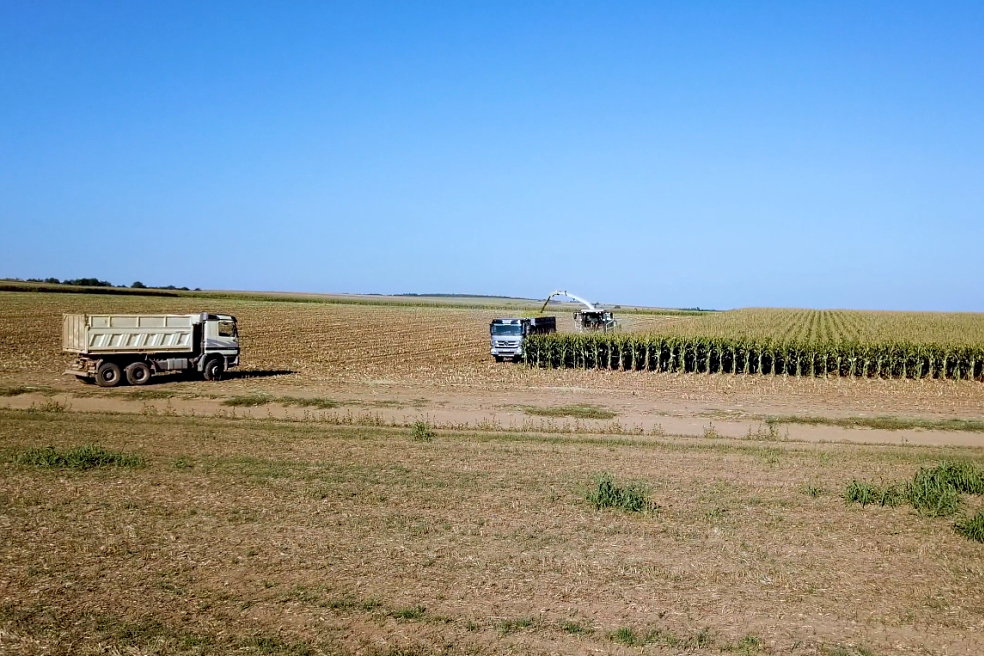
Agricultural project finance mechanisms
The main feature of project finance is the use of a wide range of sources, funds and methods of financing agricultural projects, including long-term loans, bridge loans, share issuance, equity contributions, placement of bonds, financial leasing, etc.State funds can also be used, sometimes in the form of loans and subsidies, as well as guarantees and tax benefits. There is a special term "financial engineering", which means the activity of building schemes and models that are optimal from the point of view of combining profitability and reliability.
In some cases, the cost of the project is so high that it is difficult for one financial institution to provide all the capital necessary for its development, or the risk of such a project is considered too high. For these reasons, project finance schemes may involve two or more funders participating in the project under one or more agreements.
Financing of large agricultural projects can occur in the following ways:
• Financing by one large funder, which is the simplest form of project finance.
• Independent parallel financing, in which each funder enters into a separate agreement with a special purpose vehicle and is responsible for the separate part of the investment project.
• Project co-financing, in which several lenders form a single pool (syndicate or consortium), concluding a single loan agreement with the borrower.
Some experts distinguish separate mechanisms of project finance, listed below.
First, it is the so-called project corporate finance, when the source of financing an agricultural project is the company's own funds (primarily depreciation funds and retained earnings).
Secondly, this is the so-called bank project finance, when the sources of financing the investment project are mainly bank loans issued on certain specific terms.
Unlike traditional forms of lending, project finance allows the following:
• A more reliable assessment of the borrower's solvency and reliability.
• A review of the entire project from the point of view of feasibility, security and risks.
• An accurate forecast of the result of the project, which is required by most funders.
In developed countries, calculations of the financial and economic efficiency of projects assume a possible negative deviation of key performance indicators in the amount of 5-10%, but in the markets of developing countries, investors make an allowance of at least 20-30%.
This is what creates additional costs associated with reserving funds to cover unforeseen costs. However, at the moment there is no reasonable alternative to project finance in many niches.
Project finance opened new directions in the market of banking services.
Banks act in various roles, namely creditor banks, guarantor banks, investment banks, financial consultants, initiators and/or managers of banking consortia, institutional investors, leasing organizations, etc.
If you need long-term financing for a large agricultural project, contact ESFC Investment Group.
Our team of professionals has experience in agricultural project finance in EU countries, Latin America, the USA, Canada, as well as in East Asia and the Middle East.



